The Rolex Day-Date was released in 1955 and had many features that were considered ahead of its time, including an automatic movement, plus day and date discs. Because of these unique features, the “Rolex Day-Date” soon became the flagship model for Rolex. This first rolex model was the 6511.
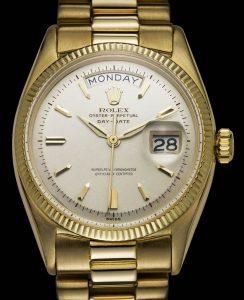
Rolex’s 6611 models that were waterproof up to 100 feet soon replaced the Day Date but it was still externally identical to the 6611. The 6611 featured the new caliber 1055 movement the first to be labeled “Superlative Chronometer Officially Certified” on the dial, and had a new accuracy standard guaranteed to remain within + 3 seconds a day.
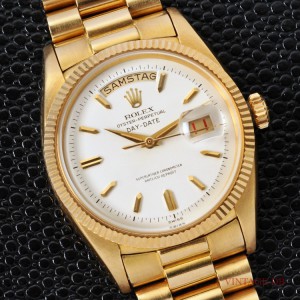
In 1959 caliber 1055 was replaced with caliber 1555 in model 1803 and later in 1965 – model 1803 received caliber 1556. In 1977 caliber 3055 (quick-set) was introduced in model 18038 and in 1988 caliber 3155 (double quick-set) was introduced in model 18238.
Caliber 3155 is the caliber still used today in all Day-Date models.
The Day Date earned the nickname the “President” when Rolex reportedly gave one to the then President of the United States Dwight Eisenhower. Some sources say that President Eisenhower was actually given a Datejust (not Day-Date) with the presidential style bracelet. But it is a fact that several other US presidents are known to wear Day-Date (Kennedy, Johnson, Nixon, Ford, Reagan).
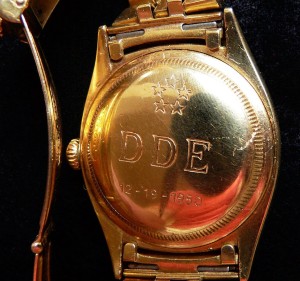
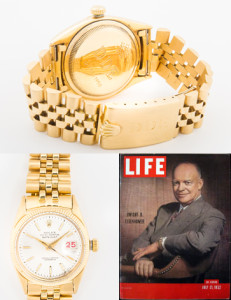

With only a few minimal changes in the case design over the years, the first large modification to the Day Date was the addition of the hack feature in 1972. This allowed the second hand to be stopped if you wanted to set the time to match an accurate source. At this time, the shape of the head was essentially the same as it is today. The “quick-set” feature solved one of the watches’ biggest problems. Introduced in the late 1970s, the quick-set was added to all Rolex models by 1983. Instead of turning the crown to speed time to change the date to the correct day, the wearer could now pull the button out half way and in an exclusive function, change the date until the correct date was displayed. The introduction of the quick-set feature also coincided with other progress for the Day Date. The inclusion of the sapphire crystal not only gave the watch a more attractive appearance but it also added to the durability of the watch. The sapphire crystal fitted tighter than the plastic glass used before and rendered the watch glass nearly scratch proof.
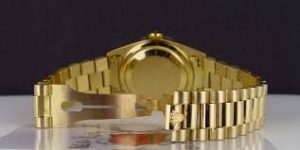
Introduced towards the end of 1990 was the “Double Quick-Set” watch, Rolex model number 18238. This model made the setting of the Day and Date even easier as they could both be set independently from each other and the time. Rolex also expanded their Crown Collection to include all types of precious stones, although they were available with diamonds on the bezel at their debut. At the end of 2000, Rolex reintroduced the Day Date in rose gold and also with a domed sapphire mineral glass.

Introduced in 1988/89 was the “Double Quick Set” watch with caliber 3155. This was model 18238 and it made the setting of the Day and Date even easier as they could both be done on the button. Rolex has also increasingly expanded their “Crown Collection” to include all types of precious stones by now although they were available with diamonds on the bezel from their introduction.
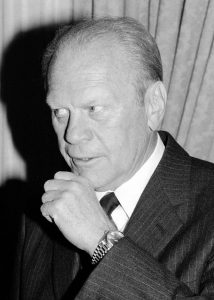
The Day Date across the world has become synonymous with class and style. This watch remains one of the most prestigious additions a man can have in his wardrobe.
